
Archaeologia Baltica
Scope & Guideline
Where Baltic Archaeology Meets Scholarly Excellence
Introduction
Aims and Scopes
- Cultural Heritage and Material Studies:
The journal focuses on the analysis of cultural artifacts, including pottery, metalwork, and everyday items, to understand the socio-cultural dynamics of past communities. - Environmental Archaeology:
Research often includes insights into the relationship between humans and their environment, utilizing techniques such as stable isotope analysis to examine dietary practices and subsistence strategies. - Chronological and Typological Studies:
It emphasizes the development of typologies and chronological frameworks for artifacts, aiding in the understanding of technological and cultural changes over time. - Interdisciplinary Approaches:
Archaeologia Baltica promotes interdisciplinary methodologies, integrating archaeology with history, anthropology, and natural sciences to provide a holistic view of past human behaviors. - Regional Focus on the Baltic Area:
The journal specifically concentrates on the archaeological findings and historical interpretations relevant to the Baltic region, enhancing the understanding of its unique cultural heritage.
Trending and Emerging
- Bioarchaeology and Dietary Studies:
There is a notable increase in research utilizing bioarchaeological methods, particularly stable isotope analysis, to explore human diets and health in historical populations, emphasizing the importance of subsistence patterns. - Technological Advances in Archaeology:
The integration of new technologies, such as portable X-ray fluorescence and non-destructive analysis techniques, has gained prominence, allowing for more detailed and less invasive studies of artifacts. - Urban Archaeology:
The focus on urban archaeological contexts, particularly in relation to the development and cultural changes in cities like Vilnius, has emerged as a significant area of research, reflecting the growing interest in urbanization processes. - Cultural Landscape Studies:
Research exploring the interaction between human activities and landscapes, including settlement patterns and environmental changes, is increasingly prevalent, highlighting a holistic approach to understanding archaeological contexts. - Post-Medieval Archaeology:
There is a growing emphasis on post-medieval studies, particularly in relation to socio-cultural changes and material culture from the 17th century onwards, indicating a broadening of chronological focus in the journal's publications.
Declining or Waning
- Classical Antiquity Studies:
Research related to classical antiquities, such as Roman influences in the Baltic region, has decreased, possibly due to a shift towards more localized studies of early medieval and prehistoric periods. - Roman Iron Age Artifacts:
There seems to be a waning interest in artifacts specifically dated to the Roman Iron Age, as more recent publications lean towards earlier or later periods, suggesting a potential saturation of research in this area. - Art Historical Analyses:
Papers focusing on art historical interpretations of archaeological finds have become less frequent, indicating a possible shift towards empirical and scientific analyses over purely aesthetic considerations.
Similar Journals

Mediterranean Archaeology & Archaeometry
Fostering Interdisciplinary Dialogue in ArchaeologyMediterranean Archaeology & Archaeometry is a premier academic journal dedicated to advancing the fields of archaeology, anthropology, conservation, and history, published by UK Zhende Publishing Ltd. With its ISSN 1108-9628 and E-ISSN 2241-8121, this journal serves as a vital platform for scholars and practitioners to disseminate innovative research and findings related to the rich archaeological heritage of the Mediterranean region. It has gained remarkable recognition, achieving a Q2 ranking in anthropology and archaeology, and a Q1 classification in several categories including arts and humanities, conservation, and history as of 2023. Its impressive Scopus rankings underscore its impact, with a significant position in history (59/1760) and conservation (11/103) disciplines. Spanning years from 2008 to 2022, the journal invites open access contributions to foster collaboration and interdisciplinary dialogue among researchers, students, and professionals alike, making it an indispensable resource for those engaged in the exploration and preservation of historical narratives within the Mediterranean context.

Baltica
Connecting Scholars Through Interdisciplinary Research.Baltica is a distinguished journal housed under the Institute of Geology and Geography in Lithuania, focusing on the diverse realms of Earth and Planetary Sciences. Established in the mid-1990s, with a publication history dating back to 1994, the journal has continually sought to advance scholarly communication and innovation within the field. Although presently categorized in the Q4 quartile of Earth and Planetary Sciences, its contributions remain vital for researchers, professionals, and students interested in interdisciplinary approaches to understanding our planet’s dynamics. With an ISSN of 0067-3064 and an E-ISSN of 1648-858X, Baltica disseminates valuable findings and discussions that appeal to a broad academic audience, encouraging critical thinking and knowledge exchange. While the journal lacks Open Access options, it nonetheless serves as a significant platform for emerging and established scholars alike, facilitating a deeper engagement with critical geographical and geological research.

Interdisciplinaria Archaeologica-Natural Sciences in Archaeology
Empowering Global Dialogue in Archaeological SciencesInterdisciplinaria Archaeologica-Natural Sciences in Archaeology is a distinguished journal published by UNIV HRADEC KRALOVE, dedicated to the exploration and integration of natural sciences within the context of archaeology. With an impact factor that reflects its strong footing in the academic community, this journal provides a vital platform for interdisciplinary research, fostering collaboration among archaeologists, scientists, and scholars from diverse fields. Since its transition to Open Access in 2010, it has made significant contributions to the accessibility of research findings, connecting global audiences interested in the archaeological sciences. Based in the Czech Republic, the journal has achieved impressive rankings—placing in the Q2 quartile across both Archaeology and Arts and Humanities categories, as well as respectable standings in the Social Sciences domain. Over its converged years from 2014 to 2024, it has published cutting-edge studies that enhance our understanding of past human behaviors through scientific methodologies. Researchers, professionals, and students are encouraged to engage with the journal’s content to contribute to and benefit from the vibrant discourse in archaeological science.
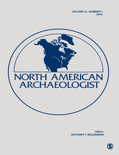
NORTH AMERICAN ARCHAEOLOGIST
Bridging Time: From Prehistory to PresentNORTH AMERICAN ARCHAEOLOGIST, published by SAGE PUBLICATIONS INC, is a prestigious journal that serves as an essential resource for professionals and scholars in the field of archaeology. With its ISSN 0197-6931 and E-ISSN 1541-3543, the journal aims to disseminate high-quality research that contributes to the understanding of the historical and cultural significance of North America from prehistory to the present. As of 2023, it holds an impressive Q2 category in Archaeology and ranks within the Q1 tier for Archaeology (arts and humanities), positioning it among the top journals in its field. Its Scopus rankings further emphasize its significance, reflecting a commendable percentile standing that underscores its influence in both arts and humanities and social sciences. The journal is committed to offering a platform for innovative research and scholarly discussion, making it invaluable for researchers, professionals, and students dedicated to advancing archaeological knowledge.
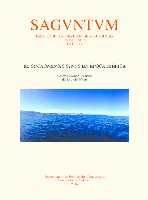
SAGVNTVM-Papeles del Laboratorio de Arqueologia de Valencia
Unlocking the Past: Where Archaeology Meets Innovation.SAGVNTVM-Papeles del Laboratorio de Arqueologia de Valencia is an esteemed open-access journal dedicated to advancing the field of archaeology, published by the Department of Prehistory and Archaeology at the University of Valencia, Spain. With an ISSN of 0210-3729 and an E-ISSN of 2174-517X, the journal has been a vital resource for scholars since its inception in 1962, ensuring that high-quality archaeological research is readily available to the global academic community. Notably, it holds a distinguished Q2 ranking in both Archeology and Archeology within the arts and humanities categories as of 2023, reflecting its commitment to rigorous scholarship and significant contributions to the field. The journals' Scopus rankings further affirm its relevance, positioned at #188 of 413 in Arts and Humanities and #179 of 354 in Social Sciences. Researchers and professionals alike can delve into a variety of topics, benefiting from the journal’s rich archive from 2017 to 2023. With a mission to disseminate knowledge and foster dialogue in archaeology, SAGVNTVM serves as an essential platform for investigators, students, and practitioners interested in the latest archaeological findings and methodologies.

Annales Instituti Archaeologici
Advancing Archaeological Knowledge Through Rigorous ResearchAnnales Instituti Archaeologici is a distinguished journal published by INST ARHEOLOGIJU, dedicated to advancing research in the field of archaeology. With an ISSN of 1845-4046 and an E-ISSN of 1848-6363, this journal serves as a vital platform for the dissemination of innovative archaeological studies and findings, reflecting the evolving trends and methodologies in this fascinating discipline. Based in Croatia, the journal captures a global audience, emphasized by its Q3 ranking in both Archaeology categories as per the latest 2023 metrics, indicating a solid presence in the academic landscape. Although it does not currently offer Open Access options, its impactful contributions are recognized through its Scopus ranks, where it stands at #137/413 in Archaeology related to Arts and Humanities and #135/354 in Social Sciences. Researchers, professionals, and students interested in the latest archaeological research and its applications will find Annales Instituti Archaeologici to be an invaluable resource, promoting knowledge and fostering scholarly communication within the archaeological community.
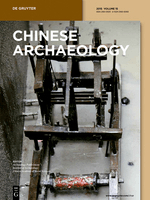
Chinese Archaeology
Revealing the Secrets Beneath China's SoilChinese Archaeology, published by WALTER DE GRUYTER GMBH, is a leading journal dedicated to the exploration and study of China's rich archaeological heritage. With an ISSN of 2160-5025 and an E-ISSN of 2160-5068, this journal serves as an essential platform for scholars, researchers, and enthusiasts in the field of archaeology, offering a blend of original research articles, reviews, and critical essays that address both contemporary issues and historical narratives. While it currently operates under a conventional access model, making cutting-edge research available to a select audience, it plays a crucial role in advancing knowledge about China's archaeological sites, artifacts, and past civilizations. Given the increasing interest in Eastern archaeology and its significance in a global context, Chinese Archaeology is positioned as a pivotal resource for understanding and interpreting the complexities of China’s historical evolution. Researchers and academics are encouraged to contribute and engage with this vital field of study to foster greater insights and innovations.

Revista de Arqueologia Historica Argentina y Latinoamericana
Connecting Cultures Through Archaeological DiscoveryRevista de Arqueologia Historica Argentina y Latinoamericana is a vital scholarly journal dedicated to the field of archaeology, with a particular focus on the historical dimensions of Argentina and Latin America. Published by the Assoc Professional Archaeologists Argentine Republic, this open-access journal has been enriching the archaeological discourse since 2007, making its valuable content freely accessible to researchers, professionals, and students around the globe. With an ISSN of 1851-3190 and an E-ISSN of 2344-9918, the journal aims to foster a deeper understanding of the archaeological heritage of the region by publishing innovative research articles, critical reviews, and methodological advancements in the study of historical archaeology. Positioned as a prominent platform for scholarship, it plays a crucial role in advancing archaeological knowledge while promoting interdisciplinary approaches within the field.
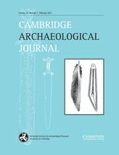
CAMBRIDGE ARCHAEOLOGICAL JOURNAL
Illuminating the Past, Inspiring the FutureThe Cambridge Archaeological Journal, published by Cambridge University Press, is a premier academic journal dedicated to archaeology and cultural studies. With an ISSN of 0959-7743 and an E-ISSN of 1474-0540, it has established itself as a leading platform since its inception in 1991, showcasing groundbreaking research that significantly contributes to our understanding of human history and cultural heritage. The journal currently ranks in the top quartile (Q1) across various categories, including Archaeology and Cultural Studies, underlining its impact and relevance in the field. The impact factor reflects its esteemed position, with Scopus ranks placing it within the 90th to 93rd percentiles among its peers. Researchers, professionals, and students alike benefit from its insightful analyses and interdisciplinary approaches, making it an essential resource for advancing knowledge in archaeology and related fields. The journal is based in the United Kingdom, at the Edinburgh Building, Shaftesbury Rd, CB2 8RU, Cambridge, England, and continues to drive scholarly conversations through its commitment to excellence and innovation in archaeological studies.
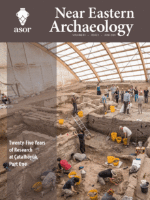
NEAR EASTERN ARCHAEOLOGY
Bridging Past and Present Through Archaeological InquiryNEAR EASTERN ARCHAEOLOGY, published by University of Chicago Press, is a premier journal dedicated to the field of archaeology, particularly focusing on the rich cultural heritage and archaeological findings of the Near East. With an ISSN of 1094-2076 and an E-ISSN of 2325-5404, this esteemed publication provides a vital platform for scholars and practitioners to share their research, insights, and discoveries. The journal holds an impressive ranking in the Q1 quartile for both Archaeology and History in 2023, reflecting its significant impact within these fields and a robust history of scholarly contribution. The journal has been pivotal in shaping discussions around archaeological methodology, theory, and contemporary issues from 2002 to 2024, as it continues to reach a wide audience through various access options. With Scopus rankings placing it in the top percentiles for both History and Archaeology, NEAR EASTERN ARCHAEOLOGY represents an essential resource for researchers, professionals, and students alike, fostering the exploration and understanding of the region's archaeological narrative.